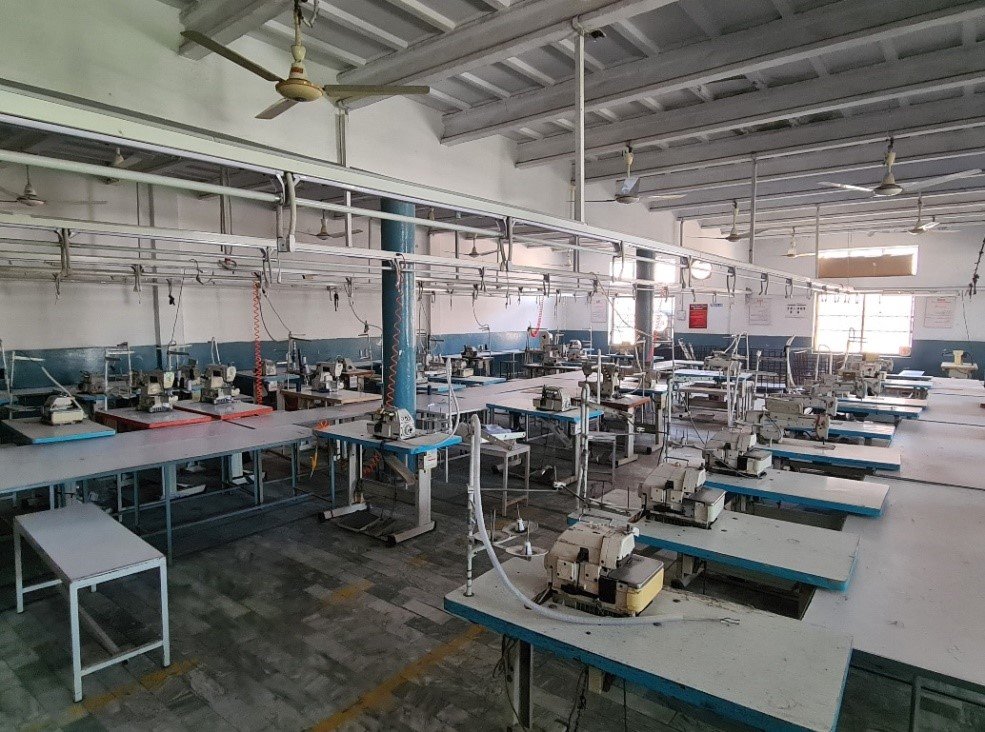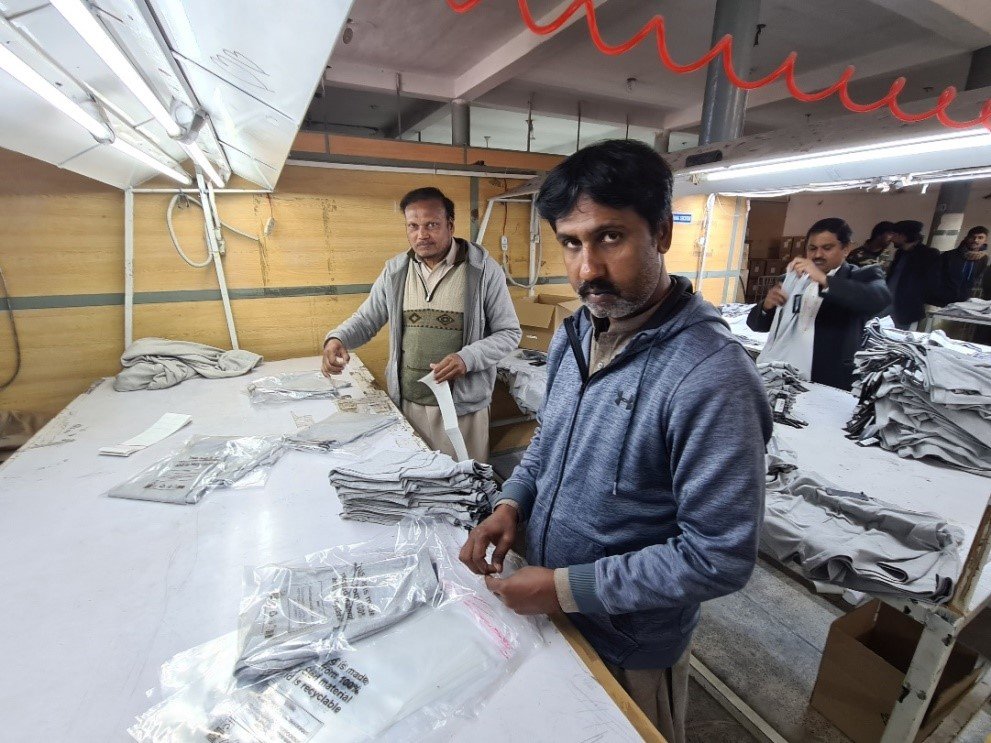Faisalabad: From colonial agricultural centre to the ‘Manchester’ of Pakistan
Agnieszka Nowakowska & Tomasz Rawski from the University of Warsaw, explore the city of Faisalabad while on secondment in Pakistan.
Pic 1. A copy of London's Big Ben in the centre of Faisalabad
Faisalabad is a city slightly east of Lahore, and less than a three-hour bus journey from the welcoming Forman Christian College. We were encouraged to visit the city by a Pakistani friend from Warsaw. Faisalabad can tell many stories. The first is the story of the British presence in Punjab and the colonization program of the region. The settlement was part of the great irrigation project of the Rachna Doab region (the territory between the Chenab and Ravi rivers) to improve its agricultural productivity. However, it was also supposedly the center of clashes with anti-colonial freedom fighters. The British fought the Sikhs in the area, and it was not until 1849 that Punjab was declared British territory.
Pic 2. Commercial part of the centre of Faisalabad
The city was founded by the British in the second half of the 19th century. The plan of its centre is a symbolic expression of the city's British origin. If you take a good look at a street map, you will see that the streets are arranged in a Union Jack. The centre of this microcosm is a clock tower meant to resemble London's Big Ben. When we look at this accumulation of symbols, we can almost hear the murmurs of satisfaction from Captain Popham Young, the officer who designed the city in the 1880s. He created a city-monument to the British presence in Punjab. The city's original name, Lyallpur, is a tribute to Sir James Lyall, the then Lieutenant Governor of Punjab. All that leaves no doubt about who was the city's most important group.
Textile manufacturing
Lyallpur, renamed Faisalabad in 1977, was originally founded as an agricultural centre. But from 1930, textile and garment manufacturing began to develop and are now the city's main industries. Sixty-five percent of Pakistan's textile exports are produced in Faisalabad.
The city continues to grow. In 1901 it had a population of less than 10,000. In the 1950s and 1960s, its population grew by 8-9% yearly. It surpassed one million residents in the early 1980s. Today, after Karachi and Lahore, it is Pakistan's third largest city, with a population of more than three million according to the 2017 census.
Pic 3. One of Faisalabad's large textile companies
Our guide in Faisalabad was called Yusuf (our friend from Warsaw’s brother). He acted as our guide and interpreter, showing us some of the local businesses, and thanks to him, we could talk to their owners. Yusuf works in one of the large Faisalabad enterprises. Its owner has several cotton mills and sewing factories in the area. Unfortunately, we were only able to view the largest factories through the windows of our car. The huge buildings were hidden behind high fences and lined up tightly side-by-side along a very long street. The street ended with places to play cricket that fill up on weekdays during workers’ lunch breaks.
Pic 4. A place to play cricket
However, we were able to take a detailed look at the sewing company where Kashif – one of Yusuf's cousins – works. The company’s owner first started as a labourer in one of the large factories. When he decided that he had learned enough, he started his own sewing business in the 1980s. How many such small businesses are set up annually in Faisalabad? How many of them fail? He, however, succeeded! The sewing company, which only employed a few people at first, now provides work for several hundred. It started by sewing for the domestic market and is now trying to establish direct relationships with European companies. We got a chance to talk to the founder’s son, the company's current owner. He told us that he works long hours each day, has no time for friendships, and his wife sees him only briefly, late in the evenings. Next year, he is planning a big trip around Europe in search of contractors. While he dreams of signing contracts with British companies, he also asked us about our contacts in the garment industry in Poland.
Wages and grain
We visited Faisalabad on a day when most people were not at work, and the streets were virtually deserted. It meant that we could spend a lot of time with Yusuf, but we didn't have the opportunity to see a working day at a sewing factory, or to get a glimpse at what it's like to work there. Instead, we could see either see large empty sewing rooms or smaller spaces with just a few people finishing an order.
Pic 9. Grain storage container
Interestingly, the enterprise we visited was not only a space for work, but it also provided a place to rest and to pray. We were also puzzled by the container standing in the corner of the garden. As we learned, it stored grain, issued to some workers as a salary supplement. Looking at salary figures in Pakistan, one can understand why a grain allowance is paid. The average salary in Pakistan is only 81,800 PKR (Pakistani Rupee) per month - ca. $287. In March of this year, a new minimum wage was announced, increasing by 28% from PKR 25,000 to PKR 32,000 per month in Punjab province. Unskilled laborers earn about $111 per month, which is very low. The grain distributed by employers helps to protect the families of their employees from starvation. It can be used to make flour and bake bread at home.
Pic 10. Kashif’s sewing room
New companies spring up in Faisalabad all the time, and the next point on our route was a sewing room founded by Kashif himself. One day, Kashif apparently announced that he could repeat the success of his previous employer's father, so he took out a loan, rented a garage, bought some machines, hired a few people and won his first contracts. He decided that the education system in Pakistan seemed a safe bet as a client, so he signed contracts with schools and started sewing school uniforms. He is now optimistic about his future success.
Pic 11. School uniforms sewn in the Kashif’s sewing room
Yusuf however, doesn't feel like starting his own business for now. He works in one of Faisalabad's large sewing factories, lives in a staff hotel, and plans to develop his own business in his free time. As we drove around Faisalabad, he shared ideas with us. Maybe he will start his own sewing business? Perhaps he will take up a trade and broker products from Pakistan? He used to think about trading with the UK, but perhaps he should establish relations with Poland? Yusuf is also considering leaving Pakistan, as neither the economic nor the political outlook is promising here. The textile industry is just recovering from the COVID-19 crisis, and it remains unclear whether it is worth taking the risk and setting up his own business. Perhaps it would be better to try to make a life for himself in Europe, like his brother?
Planning joint business ventures took up the rest of our day in Faisalabad. The atmosphere of this vibrant place - once a colonial city – and today a powerhouse of small and large industrial entrepreneurs, is all embracing. We would like to thank Yusuf and Kashif for the patience and care they took while showing us the real Faisalabad.
Dr Agnieszka Nowakowska is a sociologist and historian. She has conducted fieldwork in Poland and Lithuania. Her main interests are memory studies and sociology of education. Her PhD examined history teaching in Vilnius, and described the results of contact of official narratives about the past with everyday practices of memory.
Dr Tomasz Rawski is a political and cultural sociologist. He deals mainly with issues of nationalism, symbolic/memory politics and nation-/state-building in contemporary Eastern Europe, with particular emphasis on the former Yugoslavia, Poland and Russia. He has published a book on Bosniak symbolic strategies of nation-building in Bosnia and Herzegovina after 1995, as well as several articles on these topics. Tomasz has participated in several previous research projects focused on memory studies, including Horizon2020: REPAST. He has been a visiting scholar at University College London, Uppsala University and University of Sarajevo.













